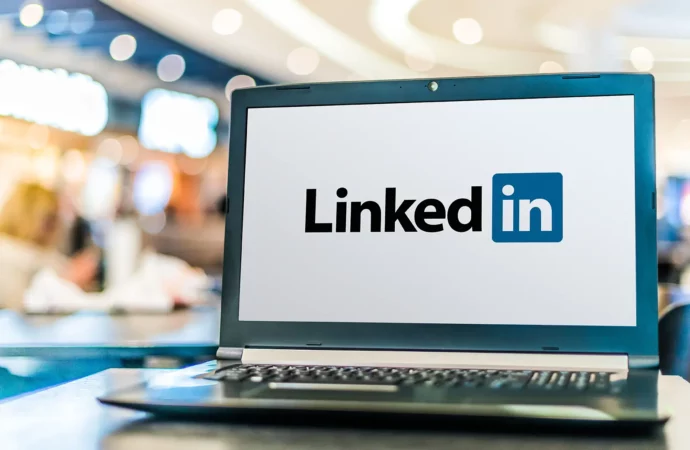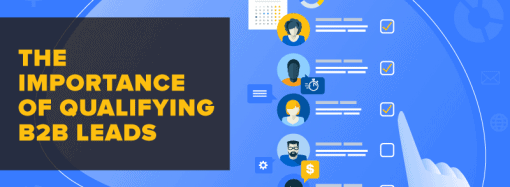Unlocking Success With Linkedin Automation: Top Strategies And Software For 2024 In today’s fast-paced business environment, manual processes are increasingly becoming bottlenecks that hinder efficiency and productivity. With the rise of LinkedIn automation, businesses have the potential to streamline repetitive tasks, freeing up valuable human resources to focus on strategic initiatives critical for growth in
Unlocking Success With Linkedin Automation: Top Strategies And Software For 2024
In today’s fast-paced business environment, manual processes are increasingly becoming bottlenecks that hinder efficiency and productivity. With the rise of LinkedIn automation, businesses have the potential to streamline repetitive tasks, freeing up valuable human resources to focus on strategic initiatives critical for growth in areas such as B2B marketing, lead generation, and enhancing conversion rates within the marketing funnel.
This shift not only secures a competitive edge, but also supports robust sales navigator utilization, effectively transforming the way organizations approach their marketing outreach and sales operations.
As technologies such as AI continue to advance, workflow automation tools are set to revolutionize entire business processes, offering unprecedented flexibility and accessibility, especially for teams working remotely. The integration of advanced chatbots and virtual assistants, further elevates the efficiency and personalization of customer interactions, significantly impacting lead generation and engagement within the sales funnel.
This article provides the top strategies and software for LinkedIn automation, outlining how businesses can leverage these tools for optimizing their B2B marketing efforts, improving lead generation, and ultimately, boosting conversion rates.
Understanding LinkedIn Automation
LinkedIn automation embodies the integration of tools and technologies designed to automate a myriad of tasks on the LinkedIn platform, enhancing efficiency and productivity. These tools automate critical actions such as:
- Scheduling and posting of content
- Sending connection requests and follow-up messages
- Executing lead generation campaigns
This automation accelerates growth, aiding businesses in swiftly achieving their objectives. However, it’s crucial to navigate LinkedIn’s stringent automation policy, which prohibits the use of third-party software for activities like modifying the platform’s appearance. Violations could lead to severe consequences, including potential account restrictions or suspensions.
To effectively leverage LinkedIn automation while adhering to platform policies, consider the following strategies:
- Identify Automatable Tasks: Focus on tasks that can be automated without compromising quality or authenticity, such as sending personalized connection requests or scheduling content posts.
- Maintain Personalization: Customize automated messages with relevant details like shared interests or industry insights to ensure they resonate with recipients.
- Strategic Scheduling: Utilize automation tools for timing outreach messages and follow-ups, ensuring engagement occurs when the target audience is most active.
Adhering to these guidelines ensures that LinkedIn automation serves as a powerful B2B marketing ally, increasing lead generation, and enhancing conversion rates, all while maintaining compliance with LinkedIn’s user agreement and policies.
Identifying Your Automation Goals
Identifying your LinkedIn automation goals is a pivotal step toward enhancing your B2B marketing, lead generation, and conversion rates. To ensure a structured approach:
- Problem Identification and Current State Analysis
- Understand the specific pain points affecting your customers, employees, and business objectives.
- Map the current processes to pinpoint bottlenecks, gaps, and inefficiencies that hinder productivity and growth.
- Goal Setting and Prioritization
- Clearly define what success looks like with automation, including expected outcomes and benefits.
- Use tools like SMART goals and business process modeling notation to articulate and validate these objectives.
- Prioritize opportunities based on potential impact, cost, and required effort, employing matrices or ROI calculations for informed decision-making.
- Solution Design and Implementation
- Select the most suitable LinkedIn automation tools considering your goals, desired features, ease of use, and budget.
- Involve your team in the goal-setting process, ensuring that the chosen solution aligns with technical and organizational readiness.
- Establish relevant metrics and indicators to measure progress, setting baselines and targets for continuous optimization.
By systematically addressing these aspects, businesses can tailor their LinkedIn automation strategy to support critical objectives, ensuring a seamless integration that drives efficiency and enhances engagement within the marketing funnel.
Selecting the Right LinkedIn Automation Software
Selecting the right LinkedIn automation software is pivotal for enhancing your B2B marketing, lead generation, and conversion rates. Here’s a comprehensive comparison to guide your choice:
- Feature Set and Capabilities:
- Prospecting & Lead Generation: Tools like Expandi, Lempod, Demand, and Dux-Soup offer robust features for finding and nurturing leads.
- Personalized Outreach: Platforms such as Dripify, MeetAlfred, and LinkedHelper allow for customized messages, ensuring your outreach feels personal and engaging.
- Analytics & Safety: Solutions like Zopto, LinkedFusion, and Taplio provide insightful analytics alongside safety features to protect your account.
- Pricing Comparison:
- Budget-Friendly Options: Octopus ($6.99/month to $24.99/month), Linked Helper ($15/month to $45/month), Dux-Soup ($11.25/user/month for Professional plan).
- Mid-Range Solutions: Dripify ($39/user/month to $79/month), Demand ($49/user/month), MeetAlfred ($29/month for Essential plan).
- Premium Services: Expandi ($99/seat per month), LinkedFusion ($65.95/user/month for Professional plan).
- Unique Offerings:
- Cloud Automation & Outreach: GetSales.io emphasizes cloud automation and LinkedIn Outreach services, offering a 14-day free trial to test its capabilities.
- AI-Powered Content Creation: Taplio stands out with its AI-driven content creation and comprehensive analytics, catering to those looking to automate engagement and content strategy.
Choosing the right LinkedIn automation tool requires a balance between features, pricing, and the specific needs of your LinkedIn strategy. Consider these comparisons to find a solution that aligns with your automation goals and enhances your LinkedIn presence effectively.
Creating Effective LinkedIn Automation Campaigns
Creating effective LinkedIn automation campaigns requires a strategic approach to ensure that your efforts in B2B marketing, lead generation, and enhancing conversion rates are optimized. Here’s how you can structure your LinkedIn automation campaigns for maximum impact:
Campaign Setup and Best Practices:
- Bulk Messaging & Connection Requests: Utilize automation tools for sending personalized bulk messages and connection requests. Remember, personalization is key to standing out.
- Connection Requests: Aim for 500 connections by sending 20 invites per working day with 2 invites per launch.
- Messaging: Ensure messages are personalized to foster genuine connections.
- Content Engagement: Strategically automate liking and commenting to boost engagement without exceeding limits.
- Auto-liking: Keep it under 100 likes over 10 launches.
- Auto-commenting: Limit to 10 comments per hour, with up to 8 launches daily.
Metrics and Analytics for Optimization:
- Lead Tracking: Monitor both the quantity and quality of leads generated, focusing on conversion rates and lead nurturing progress.
- Engagement and Traffic Analysis: Use LinkedIn Analytics to track engagement rates and website traffic from LinkedIn, including metrics like impressions, CTR, and follower demographics.
- Financial Metrics: Assess the ROI and CAC to ensure positive returns from your LinkedIn automation campaigns.
Targeting and Personalization:
- Define specific audience personas and create dedicated campaigns for each, using LinkedIn’s ad targeting tools for precision.
- Implement A/B testing with automation tools to refine messaging and campaign strategies, ensuring personalization at scale.
By adhering to these guidelines, businesses can craft LinkedIn automation campaigns that are not only compliant with platform policies but are also highly effective in achieving strategic marketing objectives.
Best Practices for LinkedIn Automation in 2024
In navigating LinkedIn automation and leveraging its capabilities effectively in 2024, businesses are encouraged to align their strategies with LinkedIn’s updated best practices. These guidelines are designed to optimize the performance of ad formats throughout the marketing funnel, enhance creative engagement, streamline call-to-action (CTA) effectiveness, and adapt to platform changes for superior outcomes.
- Ad Formats & Marketing Funnel Optimization:
- Awareness Stage: Utilize single image and video ads to capture attention.
- Consideration Stage: Employ carousel and conversation ads to deepen interest.
- Conversion Stage: Implement retargeting strategies to convert interest into action.
- Creative Best Practices:
- Combat creative fatigue by regularly refreshing ad visuals and messaging.
- Ensure relevance by tailoring content to the target audience’s interests and needs.
- Engage users with thought-provoking messages that inspire action.
- Personalize the creative to foster a connection with the audience.
- CTA & Platform Updates:
- Use clear CTAs such as “Register” to drive user action, keeping copy under 100 words for conciseness.
- Adapt to LinkedIn’s 2024 changes, including leveraging Website Tracking for enhanced insights and transitioning from Lookalike to Predictive Audiences for more accurate targeting.
Furthermore, the top-rated LinkedIn automation tools for 2024, including Proxycurl, PhantomBuster, LinkedIn Scraper, Meet Alfred, and Linked Helper, offer a range of functionalities from scraping data to automating outreach, each with high user satisfaction ratings. Integrating these tools with LinkedIn’s best practices will empower businesses to refine their LinkedIn automation strategies, ensuring they remain effective and compliant.
Measuring and Optimizing Your Automation Efforts
To effectively measure and optimize LinkedIn automation efforts, businesses must adopt a structured approach to analytics and continuous improvement. This involves:
- Key Performance Indicators (KPIs):
- Monitor KPIs of automated processes against pre-automation benchmarks and desired outcomes, including lead generation rates, conversion rates, and engagement metrics.
- Utilize metrics and defect density to assess the technical efficiency and reliability of automation solutions.
- Measure customer satisfaction and loyalty to gauge the impact of automation on the customer experience.
- Financial Metrics and ROI:
- Calculate ROI by comparing direct and indirect costs and benefits, including cost per lead versus revenue per lead.
- Assess automation ROI and rate to understand the financial efficiency and scalability of automated processes.
- Optimization Strategies:
- Regularly collect and analyze user feedback, behavior, and satisfaction data to measure adoption rates and identify areas for improvement.
- Optimize automation solutions based on stakeholder input, focusing on process efficiency, quality, effectiveness, and innovation.
- Employ automation dashboards and reports to display KPIs in real-time, facilitating the identification of trends, patterns, and anomalies for strategic adjustments.
By adhering to these guidelines, businesses can ensure that their LinkedIn automation efforts are not only effective but also aligned with strategic objectives, ultimately enhancing competitive advantage and market position.
FAQs
Q: Which LinkedIn automation tools are the best to use in 2024?
A: The top LinkedIn automation tools for 2024 include:
- Expandi
- Dux-Soup
- PhantombusterMeetAlfred
- Zopto
- Taplio
- LinkedHelper
- Salesflow
Q: Is it legal to use automation on LinkedIn?
A: Yes, using automation on LinkedIn is not illegal. However, it carries the risk of having your account banned and potentially harming your professional reputation. It’s important to weigh these risks before deciding to use automation tools on LinkedIn.
Q: How can I ensure the safety of my LinkedIn account when using automation?
A: To maintain the safety of your LinkedIn account while using automation, select tools that closely replicate human activity. This approach can help minimize the chances of triggering account restrictions.
Q: What are the best practices to avoid account restrictions when using LinkedIn automation for prospecting?
A: To prevent account restrictions while using LinkedIn automation for prospecting, follow these guidelines:
- Read reviews of the automation tool to check for any significant drawbacks.
- Look for additional proof of the tool’s reliability.
- Choose tools that include protective features to safeguard your account.













